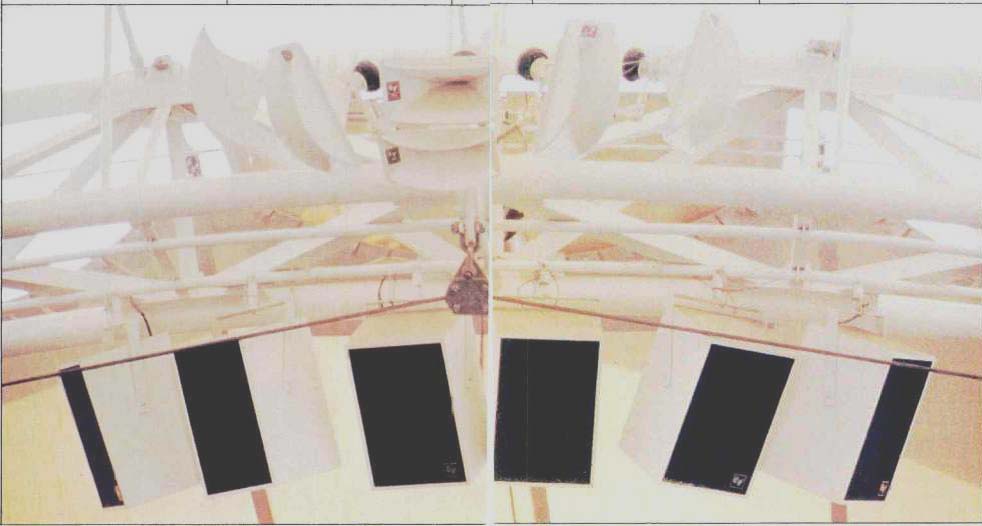
by GLEN BALLOU
Scarcely anything is more embarrassing to a hi-fi buff than setting up a sound system for a large meeting and having people complain that the sound is too soft, too loud or can't be understood. This primer of basic concepts tells how systems for big halls operate.
There is an expression, "Among the blind, the one-eyed is King." When it comes to installing a temporary P.A. system or background music system for a club or church meeting, audio buffs often fall into the category of the one-eyed. Since we audiophiles are considered connoisseurs of music and sound quality, any system we are asked to install is expected to be perfect-that is, loud, clear, with good dispersion, of hi-fi quality, and all those things we have in our home stereo.
Achieving high fidelity in a home stereo and in a sound reinforcement system are very different tasks, however, so we must think in different parameters for each. Table I shows various parameters and how they differ between the home stereo system and the sound reinforcement system.
What do these numbers and symbols mean? Let's go through them, defining them and how they affect sound: Room dimensions determine room volume, surface areas, and shape. The shape of a room can enhance sound or can be detrimental. Square rooms, or rooms that have dimensions which are multiples of their other dimensions, can have large standing waves. These waves can either cancel or boost certain frequencies.
Room volume has many effects on sound. Large volume means: Long distances from the loudspeaker to the farthest listener; Normally higher reverberation times (RT60); More power required for adequate Sound Pressure Level (SPL) at the farthest listener; Both wide-dispersion and high-Q loudspeakers may be required; Absorption of high frequencies by the air, and Multiple echoes and far reflections.
Surface area and absorption coefficient ("a") of walls, floors and ceilings make the difference between indoor and outdoor sound systems. Outdoors, the sound from a source attenuates about 6 dB per doubling of distance.
Since there are no reflective surfaces outside (except the ground), the sound appears to come from the sound source and has the same tonal quality everywhere within the source's coverage pattern. The main differences heard are varying SPL and attenuation of high frequencies with distance and dispersion.
In an enclosed area, sound emanates from the source, hits surface areas, and reflects back into the audience area. The amount of reflection is dependent on the reflective characteristics of the surfaces. Surfaces are normally considered as absorbers, with the amount of absorption, in percent, equaling the absorption coefficient of the surface. For instance, the assembly-hall wall in Table I has an "a" of 0.07. Therefore, when a sound hits that wall, 7% is absorbed, while 93% is reflected. The hall's acoustical tile ceiling, with its "a" of 0.75, absorbs 75% of the signal hitting it, and only 25% of the sound is reflected back into the room. Of the reflecting surface is close to the source, the reflection usually aids the system. However, if the reflecting surface is more than 45 mS (about 43 feet) from the source, it adds noise rather than information. If there are enough reflecting surfaces more than 45 mS from the source, the indirect or reverberant sound increases, while the direct sound from the source continues to decrease at a rate of 6 dB per doubling of distance.
In the living room, the reflecting surfaces, the listener and the loudspeakers are close together, and the direct sound is almost always louder than the reverberant sound. In the seating area of the hall, however, reflected or reverberant sound is usually greater than direct sound, reducing intelligibility. This is because the audience is usually seated beyond the "critical distance" (De), where direct and reverberant sound levels are equal.
Reverberation time (RT60) is the time required for a sound to diminish 60 dB, or to one-millionth of its initial level (see Appendix). RT60 can be shortened three ways: Decreasing volume, increasing surface area, or increasing "a." In the assembly hall of Table I, for instance, the high "a" of the acoustical tile ceiling reduced the RT60 from 4.98 to 1.09 S. Reducing RT60 usually improves intelligibility in large rooms.
Living rooms, because of their size and absorbing materials (carpets, curtains, furniture and walls), usually have a short RT60-so short, in fact, that a reverberant field is not set up. The measurement is somewhat meaningless in this context. Assembly halls are often very hard, as they have hard floors, ceilings, walls and furniture. These increase the RT60, often way above ideal.
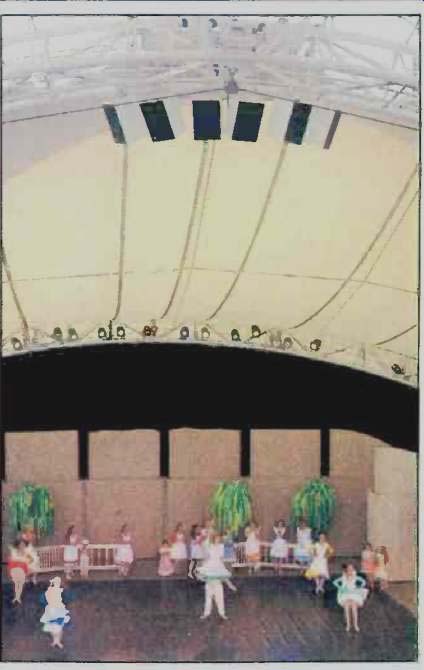
"Sa" (surface area x absorption coefficient) reduces the amount of reflecting or reverberant sound as it is increased. An "a" of 1 is equivalent to an open window, while a hard surface (smooth steel) is equivalent to an "a" of 0.01 or less. A completely hard room (all surfaces "a" = 0.01) would be very reverberant and, with the proper volume and non-parallel walls, could be considered a reverberation chamber. If the room had an "a" of 0.99, it could be considered an anechoic chamber, where all sound would be absorbed. Increasing Sa (by increasing surface area and/or absorption coefficient) will decrease the RT60 (reverberation time)of the room. The "a" of materials is always frequency-dependent, often being the greatest in the range of 1.5 to 4 kHz.
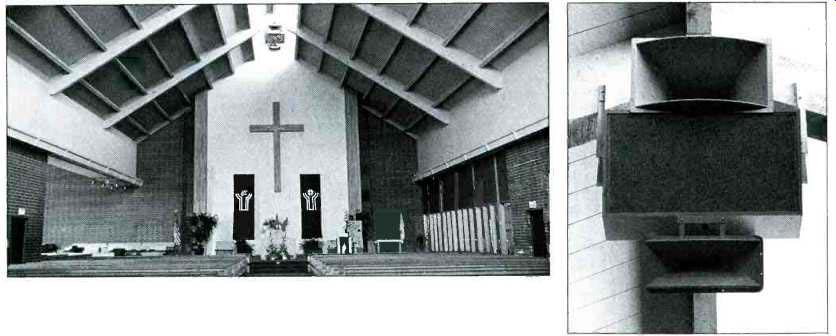
Fig. 1--Speaker Q is increased by stacking, as in this system
in St. John Neumann Church, Irvine, Cal. More horns, stacked along the same
axis and firing in the same direction, would further increase Q.
Critical distance (Dc) is the distance from the sound source (loudspeaker) where the direct and reverberant sound levels are equal. Direct sound from the loudspeaker attenuates at a rate of 6 dB per doubling of distance. If we use 4 feet as the 0-dB reference, then attenuation with distance is as follows: 8 feet, 6 dB; 16 feet, 12 dB; 32 feet, 18 dB; 64 feet, 24 dB; and 128 feet, 30 dB.
Beyond critical distance, direct sound continues to attenuate at 6 dB per doubling of distance. Reverberant sound, however, has now built up to the level of the direct sound. Reverberant sound, by definition, is diffuse, random, and therefore approximately the same level everywhere past Dc. So, as the direct sound gets weaker, the reverberant sound takes over until the direct sound is so small that it is masked by the reverberant sound, and intelligibility ceases.
Most living rooms never have a true critical distance, because their RT60 is short (less than 1.6 S). This type of room is considered quasi-diffuse, and beyond Dc attenuates at 2 to 3 dB per doubling of distance.
A short Dc in a living room is advantageous, because more listeners are seated in the reverberant field and, therefore, hear the sound more nearly alike. Since living-room absorption is usually controlled by rugs, curtains and furniture, a short Dc must be controlled by the audiophile's purchasing a relatively low-Q (non-directional) loudspeaker.
When the loudspeaker is going to be used for reinforcement in an assembly hall, a longer Dc is required. First, a long Dc allows maximum attenuation between loudspeaker and microphone, reducing feedback. Second, it increases the distance over which sound can be projected with clarity.
Again, the room volume and RT60 have been fixed by the architect's design. Therefore, increased Dc must be obtained by increasing loudspeaker Q. Loudspeaker Q is a measure of the loudspeaker's directivity. As the room becomes larger and more reverberant, the loudspeaker Q must increase so the articulation will remain adequate.
One can categorize Q into three groups: Low Q (less than 3), medium Q (3 to 10), and high Q (above 10). A loudspeaker with an omnidirectional coverage pattern (sound is dispersed evenly throughout an entire sphere) has a Q of 1.
If the loudspeaker had a perfectly hemispherical coverage pattern, its Q would be 2. In other words, with the same power into each of two loudspeakers of equal sensitivity, the one with a Q of 2 would produce 3 dB more sound on its axis than the loudspeaker with a Q of 1. (Efficiency is frequently thought of as interchangeable with sensitivity, but in sound reinforcement terms, efficiency is actually calculated from both sensitivity and Q, and thus is not a direct measurement.) If the loudspeaker covered an area of exactly 40° x 90°, its Q would be 12.86 (see Appendix) and would produce 11 dB more power on axis than the loudspeaker with the Q of 1. Unfortunately, loudspeaker Qs are always less than ideal, due to lobing and diffraction, so a loudspeaker with a specified pattern of 40° x 90° would probably have a Q nearer to 7. This loudspeaker would have an SPL 8.5 dB greater than the loudspeaker with a Q of 1. While this may not sound like much, it means a 7 to-1 reduction in required amplifier power.
Loudspeaker Q also varies with frequency. Low-frequency radiation is normally quite omnidirectional, because the wavelength is long compared to the surface area of the loudspeaker enclosure. As the frequency increases, the wavelength decreases, until it is short compared to the surface area of the loudspeaker. Therefore, as frequency increases, Q increases. An increase in Q means a narrowing of coverage pattern or an increase in loudspeaker beaming. A disadvantage of beaming is a hot spot on-axis and poor high-frequency coverage off axis.
Loudspeaker Q has several effects on the sound system:
- High Q increases critical distance (D,) which, in a home system, would make the listener sit in the direct sound field. A high-Q speaker often sounds dry, with variations in response and loudness throughout the room. In the reinforcement system, a speaker with high Q means higher articulation at the most remote listener.
- High Q narrows the coverage pattern. On the plus side, this can reduce reflections off walls and ceilings. On the minus side, it can mean poor coverage in the audience area. In both the home system and the reinforcement system, high-Q loudspeakers will cause some areas to be very hot, while other areas will be very dull from a lack of high frequencies.
- High Q usually requires large loudspeaker arrays in a sound reinforcement system (Fig. 1). In a home system, it can be produced by mistake (for example, by poorly designed cone or dome loudspeakers).
- Low Q can usually be tolerated in the home stereo system, because people usually do not sit in front of their loudspeakers to critically listen to true stereophonic reproduction. If they did, they probably would demand loudspeakers with a Q of at least 8 and proper (corner) placement. For just easy listening and background music, low-Q loudspeakers would produce more even coverage throughout the living area.
In the reinforcement system, low Q usually will reduce articulation because it shortens De. If the entire audience area were walked with a real-time analyzer, the coverage would probably appear even in level and response.
Unfortunately, what is even is not necessarily the direct articulate sound but reverberant sound which, after D2max (the maximum distance for reasonable articulation), is often only mud and noise.
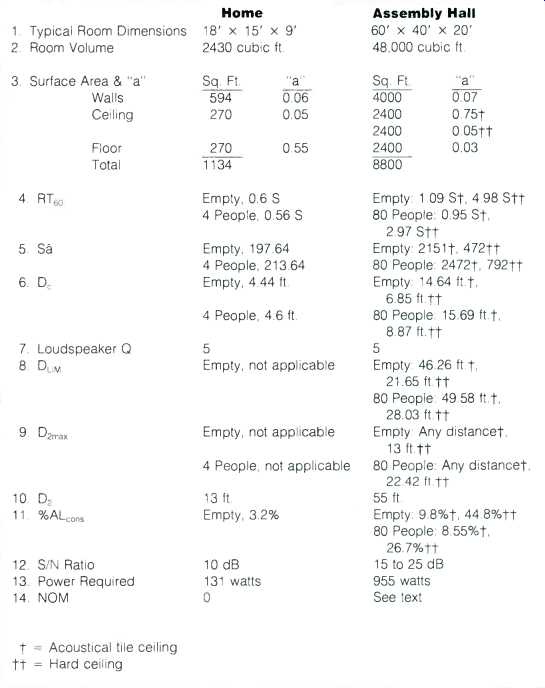
Table I--Typical values for various parameters affecting sound systems in
a home listening room and an assembly hall.
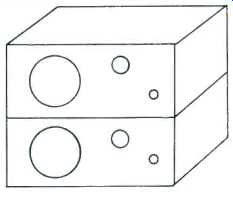
Fig. 2--Loudspeaker stacking.
One of the simplest ways to increase the Q of the loudspeaker array is to use two loudspeakers in a stacked configuration (Fig. 2). Also, installing the loudspeakers against a wall or in a corner increases Q, particularly at the low frequencies.
Installing a loudspeaker on each side of the stage area actually reduces the effective Q for seats on the sides of the room (Fig. 3). In the formula for Dc (see Appendix), I use the term "N," which is the number of loudspeaker groups. In practice, this is a ratio between the number of speakers which can be heard as actually producing direct sound to a given listener and the total number of speakers. For instance, in a distributed, ceiling loudspeaker system, anywhere from one to five speakers might be producing direct sound to a listener. If five speakers produced direct sound, and there is a total of 35 speakers in the ceiling, "N" would be 7 and would have the effect of reducing Dc by 62%. When installing a loudspeaker on each side of the stage, "N" becomes 2; therefore, effective Q is reduced 50%, which reduces Dc and DuM 30%.
Limiting distance (DLIM) is defined as 3.16 x Dc and is the maximum distance where articulation remains adequate in a room with an RT60 of 1.6 S. Below 1.6 S, DLIM does not apply, as articulation will remain adequate at any distance, as long as the signal-to-noise ratio remains adequate.
Maximum projected distance (D2max) is the distance over which sound can be projected with reasonable articulation. When RT60 is about 1.6 S, D2max should not exceed DLIM, or 3.16 x Dc. When RT60 is short, as in the average home, articulation will remain good as long as the signal-to-noise ratio remains adequate. This is obvious, as communication is possible between rooms or even between floors in the average home.
As the RT60 time increases beyond 1.6 S, which is often the case in assembly halls, D2max shortens to a condition where, at RT60 = 4.5 S, D2max becomes 0.62 x DL,M. In our example, the empty room with the acoustical tile ceiling will have good articulation throughout, while without the tile, articulation would only be good to 13 feet from the loudspeaker.
Distance between the loudspeaker and the farthest listener (D2) should always be less than D2max. If this cannot be achieved by placing the loudspeakers on the stage, they should be moved closer to the audience or actually placed in the audience area. This requires consideration of time delay; however, in the assembly hall of our example, time delay will not be a problem. It starts to become a problem when the distance between sound sources begins to exceed 45 feet.
The percentage articulation loss of consonants (%ALcons) determines whether or not the sound system will be clear enough to understand easily.
A maximum %ALcons of 15 is used for most sound system designs since it was determined by Peutz and Klein that 15% articulation loss is tolerable unless the talker is very poor or the listener has a bad hearing defect. To keep the %ALcons low, we can either vary D2 by proper placement of the loudspeaker or vary Q by stacking, etc. Also, we should be sure the loudspeakers are aimed at the audience, not at the back wall or ceiling. If a majority of the sound hits the audience, which absorbs sound, "m" (the ratio of the absorption coefficient where the speakers are aimed to the room's average absorption) is increased, and articulation is therefore improved. Finally, we should keep "N" as small as possible, preferably 1.
As can be seen, our assembly hall, with all hard surfaces and an RT60 of 2.97 S with 80 people present, would never reach an ALcons of 15% unless a loudspeaker system with a Q of 24 were available, which would usually require a large array. Under these conditions, the audiophile will be much better off just looking at the room, turning around and going home, rather than trying to overcome the laws of nature.
Signal-to-noise ratio is an important consideration, not only for good articulation, but also for low listener fatigue.
Since the living room is usually quiet and its RT60 is low, the S/N can be as low as 10 dB. Volume, therefore, is usually adjusted for listener preference, not for a proper S/N. In the assembly hall, S/N is important, because the RT60 and the noise level are usually higher. Figure 4 gives the required S/N ratios for various RT60 environments. It is important that the noise be kept as low as possible so the signal will not have to be excessive.
High noise means high signal requirement, which translates to more chance of feedback, loudspeaker failure, insufficient power, and higher reverberant noise.
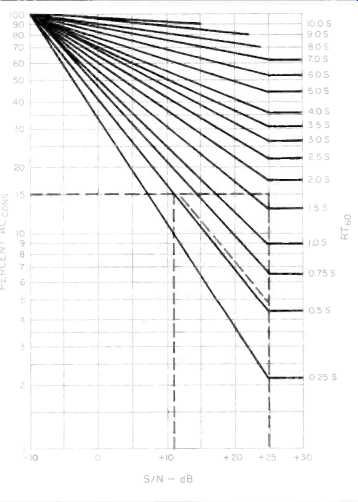
Fig. 4--The effect of signal-to-noise ratio on system articulation, %ALcons,
at the limiting distance, DLIM.
Power requirement is an important consideration when using home stereo loudspeakers for sound reinforcement in an assembly hall. Most home loudspeakers have low efficiency and therefore require high power to drive them to acceptable levels.
In the living room, where projection distances are small, low-efficiency loudspeakers and high-power amplifiers are adequate. For instance, with a Dc of 4.6 feet and a quasi-diffuse or reverberant room, we can assume the signal will be down about 4.5 dB from the 4-foot reference point at the 13-foot seating position. If the loudspeaker has a sensitivity of 82 dB SPL at 4 feet with a 1-watt input, then the same 1 watt input would produce an SPL of 77.5 dB SPL at 13 feet. Doubling the power increases the SPL by 3 dB, so, to produce a peak SPL of 100 dB at 13 feet, a 131-watt amplifier would be required. Because of the crest factor, or the fact that music signals are not sine waves, the average SPL would only be 90 dB when the peaks reach 100 dB. If the same signal were coming out of both stereo channels, which might or might not be the case, the total peak SPL would be 103 dB, and the peak amplifier power would be 131 watts per channel.
If we used the same loudspeaker in the assembly hall with the acoustical tile ceiling and 80 people, we would require over 7 dB more power than in the living room, or 955 watts to produce 103 dB peak SPL. While it is possible but not practical to find an amplifier with 900 watts of output power, the loudspeakers will not withstand the power and would self-destruct.
In the same hall, an efficient loudspeaker with a sensitivity of 97 dB SPL at 4 feet for 1 watt, as is used in theaters and in professional installations, would only require 30 watts of power to produce a peak SPL of 100 dB. While low-efficiency loudspeakers are adequate for home use with today's high power amplifiers, they can be completely unsatisfactory for sound reinforcement.
Number of open microphones (NOM) affects the gain before feedback. Each time the number of open microphones is doubled, the gain is reduced 6 dB; therefore, all unused microphones should be turned off. To avoid feedback while keeping system gain the same with two microphones as with one, the talker would have to be 30% closer to the microphones--with four mikes, 50%. (NOM is not shown in our comparison table, as it is not a factor in the home, where there usually are no open microphones.)
Conclusions
What does all this mean? When putting in a temporary sound reinforcement system be aware of the problems you can come up against and, just as important, know which problems you can correct and when you should walk away from the whole thing. Some simple rules to follow are: Aim the loudspeakers at the audience.
Try to aim the speakers so that only the audience area, not the walls, ceiling and space above the audience's head, is covered.
Keep the distance between the loudspeaker and the microphone greater than D. Hang the loudspeaker above the stage so it will not blast the front rows; this will also improve naturalness.
Use efficient loudspeakers whenever possible.
Never try to obtain frequency response from d.c. to infinity. Roll off the high and low frequencies which cause amplifier and loudspeaker failure and reduce articulation.
Keep the distance between the talker and the microphone about 6 inches.
Use as few microphones as possible.
Do not split the loudspeakers on each side of the stage.
Keep the furthest listener in the audience as close to the loudspeaker as possible.
There is no such thing as luck when installing a sound system: All system parameters can be calculated and results guaranteed before the system is installed. Any audiophile planning to install a sound reinforcement system should enroll in an audio seminar such as those run by Syn-Aud-Con and should read Sound System Engineering by Don and Carolyn Davis, who operate Syn-Aud-Con. Their address is P.O. Box 1115, San Juan Capistrano, Cal. 92693
==============
APPENDIX
1. RT60 = 0.049 V/Sá (Sabine equation).
2. Q is the Directivity Factor of a loudspeaker system.

where phi is the horizontal coverage pattern and 4) is the vertical coverage pattern. Theoretical Q is calculated with no variation in SPL within the coverage pattern. It is impossible to achieve, and all manufacturers use actual Q, which has no variation in SPL on-axis but is -6 dB at the edge of the coverage pattern. A good approximation for actual Q is the theoretical Q/2.25. The new constant-directivity horns have an actual Q close to Theoretical Q.
3. Dc is Critical Distance and is equal to
0.03121 _/QV/RT60 or 0.141 1/()Sä
4. D_LIM is the Limiting Distance and is equal to 3.16 D. Actual distance for 15% articulation loss is dependent on RT60 and S/N. Assuming an S/N of 25 dB, Dmax equals DLIM where RT60 is 1.6 seconds.
5. D2 is the maximum distance between loudspeaker and listener.
6. %ALcons = (656 D2 2 RT602 N)/(VQM)
where N equals the number of groups of loudspeakers, M is the ratio of "a" in the coverage pattern of the speaker to the "a" of the room (normally, you should assume that both N and M are 1), and D2 equals Dmax. When D2 is greater than DLIM, %ALcons will equal 9 RT60.
7. ΔDx or relative attenuation in dB equals

where ΔDx is the relative attenuation in dB, Dx is the attenuation distance, R is the room constant, and Q is the directivity factor.
8. Electrical power required, in watts, equals

where delta D2 equals the distance from loudspeaker to furthest listener converted to relative loss in dB, Δ 4' equals 12 dB, and Lsens equals loudspeaker sensitivity in dB at 4 feet with 1-watt input power.
=============
(Audio magazine, Mar. 1984)
Also see:
How We Hear Direction (Dec. 1983)
= = = =